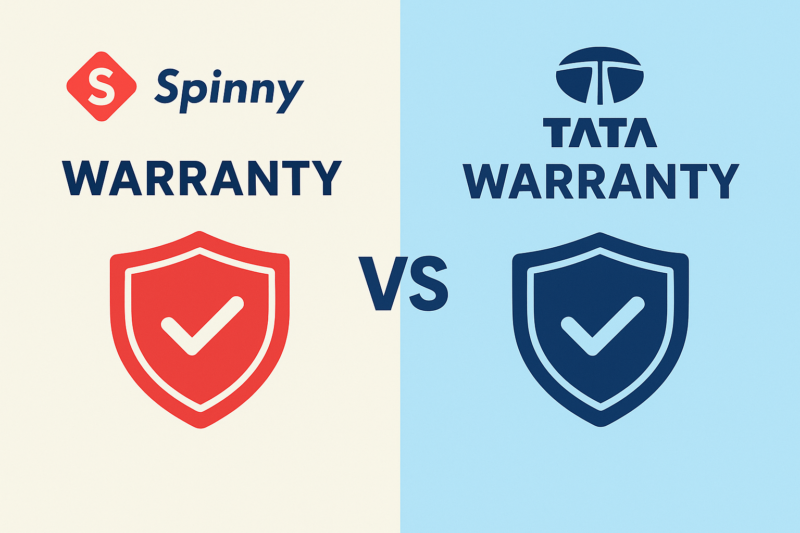Given the increasing number of vehicles in India, air pollution is becoming a rising concern. To combat this, the Indian government introduced the BS (Bharat Stage) 6 norms. This initiative aimed at aligning vehicle emissions with those of European or US (United States) standards, to develop a sustainable environment for the future.
With all the cutting-edge technologies and realistic testing facilities, BS6 has become a breakthrough initiative in India, aiming to achieve controlled and cleaner emissions and provide better air quality. In this guide, we will delve into the complete details of these norms to inform buyers about the category.
What are BS6 Emission Norms?
The BS6 (Bharat Stage 6) is an approach to limit pollutants in the emissions of vehicles sold in India with petrol or diesel engines. As of April 1, 2020, it replaced the previously used BS4 norms.
Under BS6 norms, advanced engine manufacturing technology and an exhaust system are employed to achieve lower pollution and cleaner emissions.
BS6 (Bharat Stage 6) Norms Phase 1
At the time of implementation, BS6 (Bharat Stage 6) was divided into two phases. The first one came into effect on April 1, 2020. With this, a noticeable reduction in pollutants in vehicular emissions, such as carbon monoxide, hydrocarbons, nitrogen oxides, and particulate matter, was observed compared to BS4 norms. For example, nitrogen oxides were reduced by nearly 70% in diesel engine emissions.
Manufacturers had also adopted advanced engine technologies and exhaust systems, including a catalytic reduction system, a diesel particulate filter, and an enhanced fuel injection system, to comply with the BS6 emission standard. These new technologies increased production costs for automakers, which in turn drove up consumer prices.
BS6 Norms Phase 2: Real Driving Emission
As of April 1, 2023, the RDE (Real Emission Driving) testing has been implemented, along with various breakthrough technologies mentioned in Phase 1.
The RDE (Real Driving Emission) testing simulates the actual scenario of pollutants in real-time driving situations, capturing emissions from vehicles as they are driven. It was a more realistic approach compared to the standard laboratory testing.
Under the BS6 phase 2, all vehicles must have this RDE certification. This testing is conducted while driving the car on a public road using a portable emission measurement system (PEMS) to measure the pollutants in practical circumstances.
The RDE testing measures carbon monoxide, nitrogen oxides, hydrocarbons, and particulate matter from emissions whose threshold values are mandated by the Government of India. These values in the BS6 phase 2 are significantly lower than the previous BS4 norms. With this, the emission becomes much cleaner, resulting in improved air quality.
BS6 Regulation Compliance
After the implementation of BS6 norms, compliance is mandatory for every new vehicle sold in the country. Any form of non-compliance in this regard can lead to heavy penalties and fines. To comply with the BS6 emission standards, manufacturers must conduct RDE testing and develop new engine and exhaust system technologies that comply with BS6 norms.
Additionally, as RDE testing is a more complicated and expensive process compared to laboratory testing, automobile manufacturers must invest heavily in infrastructure and testing equipment.
The fuel for new BS6 norm vehicles has been significantly upgraded by lowering the sulphur content, which reduces the emissions of pollutants. The shift from BS4 to BS6 fuels was very smooth, and leading oil manufacturers are producing and supplying it across India.
What are the Technologies That are Employed in BS6 Engines?
The BS6-compliant engines are built by implementing Euro-6-compliant technologies:
- The Diesel Particulate Filter (DPF) is employed in BS6 diesel vehicles. It filters the particulate matter from the engine’s exhaust gases, thereby producing cleaner emissions.
- Selective Catalytic Reduction (SCR) utilises urea-based injections, which significantly reduce the nitrogen oxide components in emissions.
- The Onboard Diagnostic System (OBD) notifies the vehicle driver about system malfunctions and also keeps a record of the emission level.
Challenges of Implementing BS6 (Bharat Stage 6) Norms
The major shift from BS4 norms to BS6 norms brought forth several challenges. They are as follows:
- To provide the BS6 norms certificate, the government of India offers access to standard laboratory testing and RDE facilities at a significant cost.
- An abrupt transition from BS4 norms to BS6 norms, skipping the BS5 norms, involves substantial technological advancements, which also increased the production cost for the vehicle manufacturers.
- For consumers, this has resulted in the vehicle’s price being higher than that of BS4-compliant vehicles.
However, to simplify access to testing facilities, the central government has also made the registration process online. Automakers can apply for certificates on the respective web portals before releasing their vehicles in the market.
How Would You Know if a Vehicle Complies With The BS6 Norms?
The vehicle identification number (VIN) is typically located on the windshield or in the engine bay. The 10th digit denotes the year of manufacture. One can see the VIN to identify the year of manufacture and match it with the implementation date for BS6 norms.
Most states in India indicate on the registration certificate whether the vehicle complies with BS6 norms.
What are the Key Advantages of BS6 (Bharat Stage 6) Norms?
The key benefits of purchasing a BS6-compliant vehicle are as follows:
- An environmentally friendly system that makes way for a cleaner air quality
- Adopting best practices that help maintain a sustainable environment
- Implementing the latest technologies that offer better fuel efficiency with lower pollution, thus limiting carbon monoxide, hydrocarbons, nitrogen oxides and particulate matter in emissions.
- Showcases India’s commitment to the Paris Climate Change Agreement.
What are the Disadvantages Of BS6 (Bharat Stage 6) Norms?
Despite its numerous benefits, BS6 norms also have a few drawbacks. Check them out below:
- Requires increasing investments in testing facilities and technological implementations, which raises production costs and, as a result, the selling price of BS6-compliant vehicles.
- BH6 vehicles are more sensitive to the fuel quality. In remote areas of India, one may not find the particular types of fuel that drive the engine without clogging.
The implementation of BS6 norms has presented India with a new opportunity to produce fuel-efficient and more environmentally friendly vehicles. Although it involves implementing complex technologies within the automobile’s system, manufacturers are cooperating with norms to produce vehicles with less harmful emissions.
Above all, successful cooperation between the Indian government, automobile manufacturers, and consumers has led to a cleaner and more sustainable environment for the future.
FAQs about BS6 (Bharat Stage 6) Norms
Q. What is the full form of BS6?
The full form of BS6 is Bharat Stage 6, an initiative by the Indian government aimed at controlling emissions in various vehicles.
Q. What do BS6 norms mean?
BS6 are the guidelines set by the Indian government to control and limit the pollutants, such as carbon monoxide, nitrogen oxides, hydrocarbons, and particulate matter, in vehicle emissions.
Q. What is the implementation date of BS6 in India?
BS6 norms were implemented on 1st April, 2020, after which all vehicle manufacturers are legally bound to comply with them before selling their two-wheelers/four-wheelers in the market.
Q. How do Bharat Stage 6 Norms affect vehicle prices?
By complying with BS6 norms, vehicle manufacturers must employ advanced engine technologies and exhaust systems, which lead to higher production costs and make the vehicles more expensive.
Q. Why is the mileage of the BS6-compliant vehicles low?
BS6-compliant vehicles use selective catalytic reduction and diesel particle filters. This system consumes more energy and has lower fuel efficiency, resulting in reduced mileage compared to BS4-compliant vehicles.




